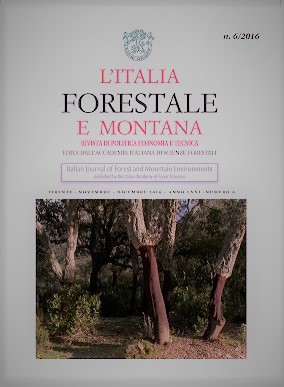Published
2017-03-29
Keywords
- floods,
- city of Messina,
- hydraulic-forest reconstitution,
- Peloritani Mountains
Abstract
Every time a flood occurs in our country, especially in the presence of human victims, the most common sentences that are repeated and immediately find credit in the public opinion, in the absence of objective controls, are roughly the following: “It is the first time something like this happens”, “Such violent rain has never been seen”, “Nothing like this has ever happened for as long as anybody can remember”. The day after the storm that on 1st October 2009 devastated the villages of Altolia, Giampilieri, Guidomandri, Itala and Molino, south of Messina, and the nearby town of Scaletta (37 dead, 1,656 displaced people, a large number of houses made uninhabitable, public works destroyed and endless human sufferings), many people were quick to declare that it was an unexpected and unforeseeable event, due to weather events “never before recorded in those areas”. Well, it suffices to reconstruct the events of the last three centuries to see that all the eastern slopes of the Peloritani Mountains have been repeatedly affected by disastrous storms, due to various, contingent, unfavorable factors such as the specific geo-morphological nature of the soil, the structure of the hydrographic system, the peculiar thermo-pluviometric regime, the influence of the currents in the Strait of Messina, and, not least, the lack of human foresight. Our work also shows how the massive works of watershed improvement by reforestation carried out during the twentieth century have contributed to making floods less frequent and disastrous.


